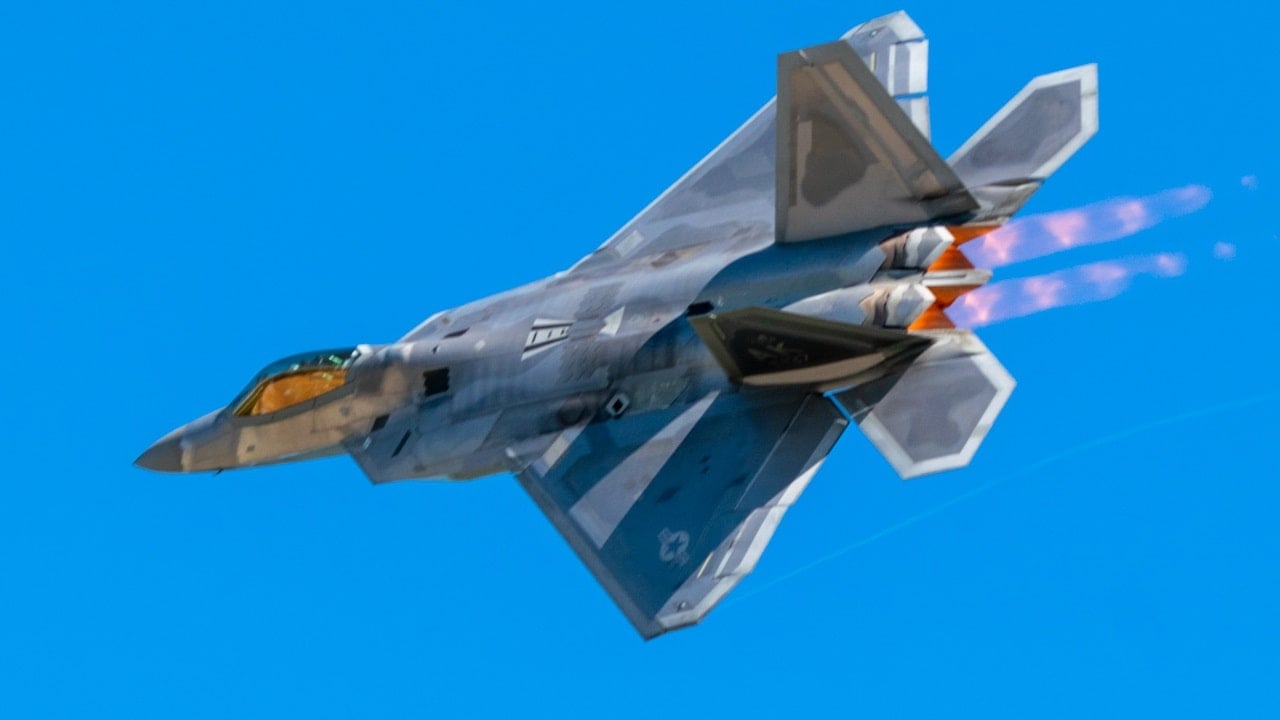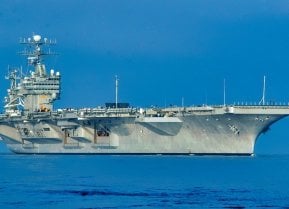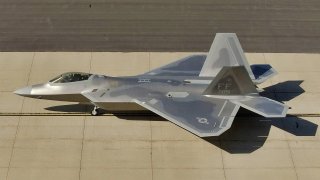The F-22 Raptor Stealth Fighter Is Worth Every Penny
Yes, the F-22 Raptor has been costly. It remains expensive to maintain. But the Air Force needs it as an option for air dominance and to penetrate contested airspace.
Key Point: The F-22 Raptor is one of the most expensive fighter jets on Earth. And yet, the U.S. Air Force surely wishes it had far more of them and does not want the F-35 program to get cut back like the Raptor. No doubt, the F-22 is one of the best places on Earth and worth every single penny.
Meet the F-22 Raptor
Does it really have the radar signature of a bumble bee? The U.S. Air Force thinks so. I am talking, of course, about the F-22, a $108 billion program that at the time of its development was the most advanced fighter in the world.
The F-22, though, is expensive to fly and maintain. It sets the Air Force back $68,000 per hour of flight – more than the F-15E Strike Eagle and the F-16C Fighting Falcon. Why did the U.S. military insist on buying it despite the cost? The main reasons are its stealthiness; its supercruise, or ability to fly at high speeds without afterburners; its high agility; and excellent maneuverability. The Air Force thought the F-22 was worth the investment.
Not the Numbers the Air Force Originally Wanted
The F-22 program was ambitious and optimistic, but its numbers were trimmed early. Originally the Air Force wanted 750 F-22s. That number fell to 648 by 1996, and was further cut a few more times until it reached 183 in 2006. A fleet of 195 was finally produced, and eight of them were test planes.
The F-22 had interest from Japan and Australia, but federal law prohibited its export, so the U.S. Air Force was the only buyer. And did it ever pay a pretty penny for the warbird. Each F-22 cost from $137 million to as much $340 million, depending on how the fly-away cost is calculated. And this doesn’t count research and development by Lockheed Martin. The airplane also has life cycle costs for fuel, maintenance, and spare parts that were estimated to reach $59 billion. For example, the F-22’s stealth coating often has to be repaired due to the high temperatures of supersonic flight.
The Air Force plans to keep the F-22 until 2030, upgrading it along the way until it is replaced by the Next Generation Air Dominance fighter, or NGAD. Some F-22s were supposed to be on the chopping block – the original budget proposal for FY23 would have had the Air Force cut 33 of the Raptors. However, the House Armed Services Committee required the Raptor to be kept and flown at its current numbers, with upgrades along the way, until the NGAD is ready to replace it. Congress believes the F-22’s air dominance role and stealth attributes make it an important piece of the U.S. arsenal as threats surge from Russia and China.
The F-22 Is Darn Near Invisible
The F-22’s radar cross-section is what its proponents most extol – the F-22 is five to ten times less observable than the F-35. Sandboxx media recounted an interesting story about the aircraft’s stealth capabilities. In 2013, an F-22 was flying in support of an American MQ-1 drone. “The F-22 pilot, Lt. Col. Kevin ‘Showtime’ Sutterfield, was able to take his F-22 right up to one of the Iranian fighters entirely undetected, fly below the offending jet to inspect its weapons load, and then pull up alongside the Phantom to tell him, ‘You really ought to go home.’” The two F-4’s left the scene immediately.
Thus, the F-22 can sneak up on enemy fighters undetected and acquire data for multiple targets. The pilot’s situational awareness is enhanced. For dogfighting, the F-22 carries two Sidewinders and four AMRAAMs. For ground strike, it has two AIM-120s and two AIM-9s.
F-22 engines allow more thrust than any other fighter for greater than Mach-1.5 to Mach-2 speed and a high rate of climb. It is hard for an enemy to detect and catch up to the F-22. Electronic warfare and countermeasures enhance survivability.

Yes, the F-22 has been costly. It remains expensive to maintain. But the Air Force needs it as an option for air dominance, and to penetrate contested airspace. It makes for a good companion to the F-35 and integrates well with fourth-generation fighters such as the F-15 and F-16. Sure, retirement of a squadron of F-22s could save funds that could then be applied to the NGAD, but such a move would hurt the readiness of the Air Force, which must now protect Europe and the Indo-Pacific. There are many reasons the U.S. military decided to buy it, and to upgrade it for 21st century warfare.
About the Author
Dr. Brent M. Eastwood is the author of Humans, Machines, and Data: Future Trends in Warfare. He is an Emerging Threats expert and former U.S. Army Infantry officer. You can follow him on Twitter @BMEastwood. He holds a Ph.D. in Political Science and Foreign Policy/ International Relations.


